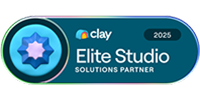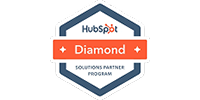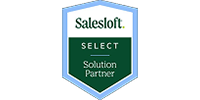The 4-Basecamp Strategy to Avoid the Sales Program ‘Death Zone’
Scaling a company without a working sales and marketing program is like scaling Mount Everest without proper preparation. No one just goes up the base of Everest and climbs it; it’s a serious feat that you must approach with diligent research and planning, or the consequences will be deadly. As someone who has been building sales and marketing programs for the better part of 20 years, it’s frustrating to see how cavalier some business leaders are when thinking about this effort at their own companies. Although it may not be the easiest concept to digest, some of these founders need to adjust their way of thinking, otherwise they will continue to lose time and money because they haven’t thought through the different growth phases at a holistic level.
Just like climbing Mount Everest, you need to scale your sales effort in the same way by taking a measured approach that tracks progress throughout the journey. Your organization must complete different stages and ensure that each phase is planned carefully to achieve success. FullFunnel has lived by the following four “basecamps” since day one of our inception to produce a scalable sales and marketing program for ourselves and our clients, and by completing each of these basecamps, you can start ascending your own Everest within your particular market.
Basecamp I: Build a Plan
The most obvious and simple step, yet very few people follow through with this phase, is actually building the plan. Fundamentally, sales is a science, and running sales programs can be understood by leveraging the same basic math we all learned in grammar school. You should always start with the endgame in mind when approaching your research and planning stage. The necessary questions you need to ask yourself first are what’s our optimal customer acquisition cost (CAC)? How many new clients do you need to sign per quarter? If you don’t have historical data to determine these conversion metrics, the model below is one I’ve used for years, and it will establish a baseline for your business to follow:
|
Stage |
Description |
Stage Conversion % |
|
Sales Accepted Lead (SAL) |
A qualification call |
90% |
|
Sales Qualified Lead (SQL) |
A qualification call that fits the criteria for the solution or service we’re selling |
25% |
|
Opportunity |
Needs to be BANT qualified
|
25% |
|
Closed Won |
Contact signs the deal |
Let’s say that you need to close 10 deals per quarter. Using the model above, this data will look like the following:
|
Stage |
Amount |
Stage Conversion % |
|
Closed Won |
10 |
25% |
|
Opps |
40 |
25% |
|
SQLs |
160 |
90% |
|
SALs |
178 |
In order to generate your 10 closed-won deals, you would need to generate 178 qualification calls per quarter. Or conversely, let’s say that you need to achieve a CAC of $5,000 in order to be financially sustainable; in dollar figures, this will resemble the following data:
|
Stage |
Cost Per |
Stage Conversion % |
|
Closed Won |
$5,000 |
|
|
Opps |
$1,250 |
25% |
|
SQLs |
$312 |
25% |
|
SALs |
$282 |
90% |
So with a CAC goal of $5,000 per quarter, you will be required to generate qualification calls with your ideal prospect demographic for a cost of $282 per SAL by following this model. In order to close 10 deals with a CAC of $5,000, you will need to invest $50,000 into the program.
But there are more factors at play than just drilling down on a CAC model. At the end of the day, there are only four ways to create demand immaterial of the product, service, or solution you’re selling: These demand pillars are:
- Peer-to-Peer (P2P) Channels: Events, trade shows, networking sources, referrals, and partners.
- Pros: P2P demand generation channels are cost-efficient and deliver a low barrier to entry.
- Cons: P2P channels aren’t scalable. Events and trade shows in particular are costly if you need to purchase booth space, require human capital to attend, and can be challenging to achieve a clear return on investment (ROI).
- Organic: Organic search traffic for your company is predicated on the keyword composition of your digital properties.
- Pros: An evergreen asset that can produce leads over the long term for a very attractive cost.
- Cons: Huge upfront monetary investment and the time required to start seeing organic results may require patience (think months out).
- Paid Advertising: From traditional paid media like print and billboards to digital advertising through search, social, and display ads, you’re paying for eyeballs and traffic.
- Pros: Targets high-intent prospects and consumers who are ready to act with urgency.
- Cons: Paid advertising requires a significant investment and technical barriers to entry. Your products, service, or solution may be vying for similar ad space against industry leaders with nearly endless resources.
- Outbound Prospecting: Email, phone, social (LinkedIn), and sometimes, even text messaging. These channels enable your company to proactively interact with your ideal prospect demographic.
- Pros: Low barrier to entry and channel diversity to reach a wide pool of prospects.
- Cons: A lack of urgency; people from these channels aren’t always actively searching for a solution, so success can be challenging.
Now, let’s assume that you’re going to leverage outbound prospecting (every non-salesperson’s favorite go-to sales tool) as your demand channel and you need to generate a cost per SAL of $282. In Boston, MA, where FullFunnel is located, the average Sales Development Rep (SDR) earns an annual salary of roughly $50,000. Add in extra costs such as overhead, training, and management, and this same SDR’s costs are likely 50% higher at $75,000. With 2,000 working hours annually, that $75,000 equates to $37.50 per hour. So for your model to work, your SDRs would need to spend roughly 7.5 hours per SAL generated.
This sounds doable, right? Now that the math works, let’s move on to Basecamp II to test whether the product, service, or solution strikes a core with the target persona.
Basecamp II: Demand Productivity
A program is considered demand productive when you’re generating SQLs who fit the right profile and have a basic fit for your product, service, or solution. This phase is critical to your company’s scalability because all demand programs are supposed to be targeting a specific persona with a specific set of pain points. If you’re repeatedly creating SQLs who meet this criteria, the account is demand productive.
There are other aspects at play during Basecamp II than just having SQLs who fit a certain persona. You should also keep in mind that the cost per SQL isn’t required at this stage, so if your costs are higher than you initially want, don’t panic. The bottom line of this stage is determining that your offering resonates in the marketplace and you can move up the mountain to Basecamp III.
Basecamp III: Pipeline Productivity
A program is pipeline productive when you’re able to procure three or more SQLs who meet BANT criteria who move into an Opportunity and closes within a standard sales cycle for your product category. If you sell to small- or medium-sized businesses, the deal may close quickly in a month or two, while a multi-billion-dollar enterprise may require a sales cycle lasting six months, a year, or even longer. Know your audience.
Visually, pipeline productivity can be thought of like a marble set. Think of this step as simply dumping a bunch of marbles at the top of a funnel and watching what happens next. Once marbles start to find their way to the bottom of the funnel (Closed Won), the account is pipeline productive, and you can move on to Basecamp IV.
Basecamp IV: Financial Productivity
“This is the sales program death zone…where your company literally starts to die.”
Financial productivity is the final stage of reaching the top of Everest and successfully scaling your business. At this point, everything has to work in harmony and achieve the financial requirements for your unique offering to be scalable and profitable. This step is different for many companies, and can be measured in terms of gross margin, payback period, or CAC. Think about financial productivity as determining whether your pipeline opportunities are experiencing enough pain to see the value in your offering that they’ll exchange dollars to resolve these issues.
In greater context, this stage is also where many high-flying, potentially disruptive startups evaporate from the market, as they aren’t able to establish a financially productive business model to compete against a sea of other startups and established industry players. These types of businesses may not be initially concerned to burn through cash to gain a foothold, but if there’s no more rounds of funding on the horizon, a business model that can’t stand on its own will sink fast and shut its doors like so many companies do on an annual basis.
Want to Reach Your Own Summit?
There are many variables that go into launching, managing, and expanding a business and lacking structure around any one area could cause your company to lose its footing and descend rather than ascend the mountain. The bottom line is this: building a scalable sales and marketing program isn’t easy, and it’s not something you just do on a whim, just like you don’t climb Mount Everest without the proper planning. Respect the mountain, and if you don’t know…don’t go.
If you’re unsure how to scale your own Mount Everest, you don’t have to tackle this journey by yourself. FullFunnel has worked with hundreds of clients spanning different industries, and we’ve seen firsthand how these four basecamps have made a world of difference in helping businesses implement a sales and marketing program that supports their unique expansion efforts. If you need a proven guide to scale your own mountain, contact us today for a consultation.
This article was originally published on March 25, 2020, and has been republished to provide the most accurate information possible.










